RESEARCH FACILITIES
The College of Liberal Arts and Sciences has created and maintains a number of specialized research facilities that provide support for the educational and scholarly pursuits of our faculty and students. In addition, our science departments maintain labs to support research and instruction in Chemistry and Biochemistry, Biology, Physics and Environmental Science.
Imaging Center
The College of Liberal Arts and Sciences operates a state-of-the-art multi-instrument microscopy lab that serves the Science Departments in the College, as well as faculty and students throughout the University. Instrumentation includes a confocal microscope, scanning and transmission electron microscopes and several fluorescence microscopes.
Our Leica SP8 inverted confocal microscope provides the ability to acquire high-resolution, optically sectioned images from within a thick sample (in either fixed or living cells and tissue) or to reduce background fluorescence from thin cultures. Other features of the SP8 include: high sensitivity point confocal, high-sensitivity GaAsP HyD detectors with photon counting, spectrally tunable emission bands, a resonant scanner for low photo-toxicity, 3D z-stacks, time lapse imaging, stitching and multi-position time lapse imaging.
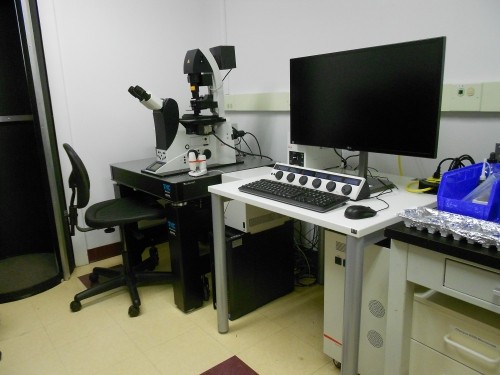
The Hitachi S-3000N Variable Pressure Scanning Electron Microscope is capable of imaging specimens at high vacuum and in a variable pressure range from 1 - 270 Pa. This allows non-conducting specimens, such as insulating materials and water or oil containing samples, to be imaged without sputter coating. It has a tungsten filament (electron source) and a secondary electron detector for use in high vacuum only, as well as backscattered and absorbed electron detectors which can be used in both high vacuum and variable pressure modes.
Specifications
- Secondary electron resolution: 3.5nm to 50nm (high vacuum mode)
- Backscatter electron resolution: 5.5nm to 100nm (variable pressure mode)
- Magnification: 15 to ~300,000x
- Filament: Tungsten filament
- Accelerating voltage: 0.3 to 30 kV
- Maximum Specimen size:150mm diameter x 20mm high
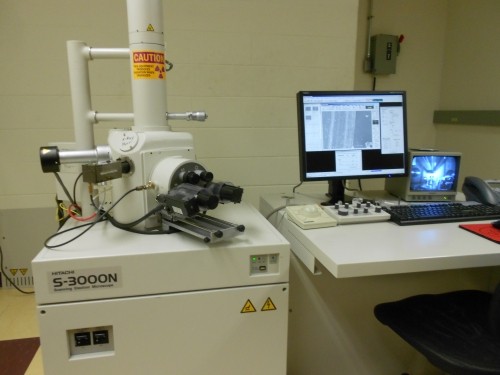
The Hitachi HT-7700 Transmission Electron Microscope (TEM) has a 40–120 kV operating voltage and a unique double-gap objective lens design that provides high contrast (HC), high resolution (HR), low magnification (Low Mag) and wide field of view imaging modes in one system. The magnification ranges are: 50x – 1,000x in Low Mag mode, 200x- 200,000x in HC mode and 4,000x – 600,000x in HR mode, along with a high-resolution lattice observation of 0.204nm at 100 kV. With both high contrast and high resolution modes, the H-7700 is designed for imaging both biological samples such as thin sections of fixed embedded tissue, metal shadowing of purified proteins and immuno-electron microscopy and material science specimens such as nanoparticles, nano-catalysts and light polymers.
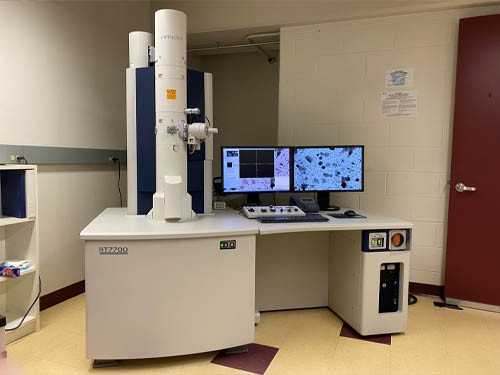
The Leica LMD fluorescence upright microscope is a laser microdissection system that employs a contact- and contamination-free method for the microscopic isolation of specific single cells or entire areas of tissue from a wide variety of tissue samples.
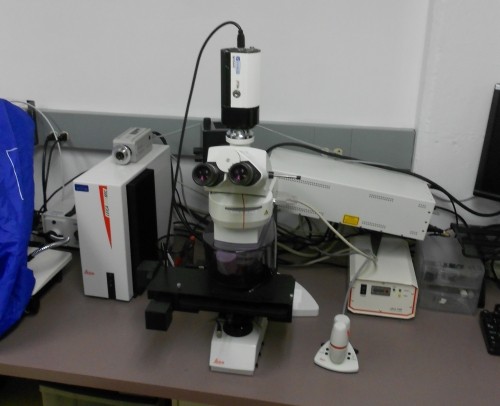
The Zeiss Stemi SV11 APO Stereo (or Dissecting) Microscope offers a large object field and extended working distances making it suitable for the observation of large biological samples to the inspection/analysis of rough materials surfaces. This Stemi SV11 is also equipped with a fluorescence lamp and filters sets for acquiring fluorescent images.

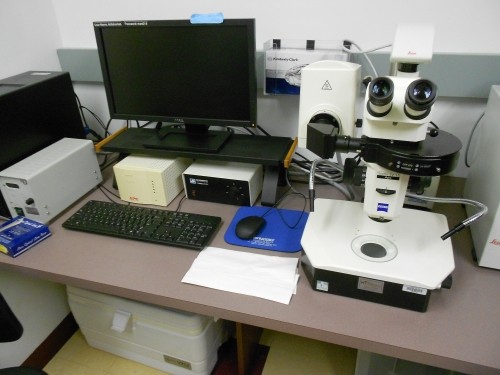
The EMS150R ES is a compact rotary-pumped coating system for both sputter coating non-conducting/poorly conducting SEM specimens with non-oxidizing metals, such as gold or gold/palladium, and for carbon coating SEM specimens for Energy Dispersive Spectroscopy (EDS).
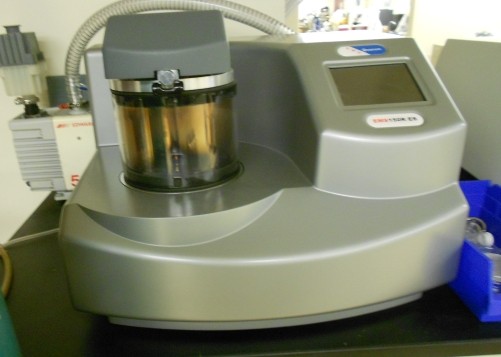

The Leica EM CPD300 critical point dryer is used to dehydrate and preserve the surface morphology of biological or industrial samples prior to examination under the Scanning Electron Microscope (SEM). This automated, controlled technique ensures reproducible results and the same sample quality from every run. In addition, the software controlled cut-off functions of the CPD300 make it safer to use than a manual critical point dryer.
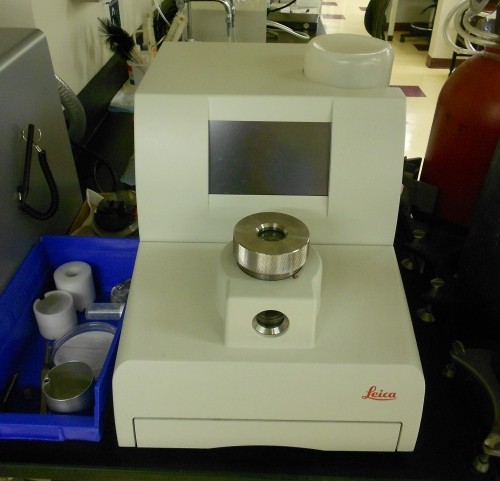
2 Reichert-Jung Ultracut E Ultramicrotomes
2 RMC MT6000-XL Ultramicrotomes
RMC MT5000 Ultramicrotome
Greenhouse
The Villanova Greenhouse features 2950 square feet of climate-controlled growing space for various projects, including faculty and student research and instructional laboratory use, and houses some of our permanent teaching and research plant collection.
Immersive Visualization CAVE
The Center of Excellence in Enterprise Technology manages a large CAVE housed in Falvey Memorial Hall in Falvey Library. The CAVE is an immersive virtual reality space that can accommodate up to 20 viewers in its 18'-wide, 10'-deep, 7.5'-high enclosure, with an extendable projected ceiling. It provides viewers with an immersive visualization experience for viewing and interacting with 3D virtual-reality worlds, 3D big-data displays and 3D models of real-world locations and objects.
Research Instrumentation in Chemistry and Biochemistry
The Chemistry and Biochemistry Department houses a wide variety of instrumentation to support research and instruction, including JEOL 500 MHz and 400 MHz Nuclear Magnetic Resonance Spectrometers, SCIEX 5600+ TripleTOF and 4500 Q-Trap mass spectrometers, and biochemical instrumentation such as a Typhoon Fluorescence Laser Scanner.
Research Instrumentation in Biology
The Biology Department maintains an array of instrumentation to support their research and instructional activities. Instrumentation includes an Illumina next generation DNA sequencer, two flow cytometers and several fluorescence microscopes.
Research Instrumentation in Physics
The Physics Department includes among their research instrumentation a Mossbauer spectrometer and a powder x-ray diffractometer.
High Performance Computing Cluster
Supported by a National Science Foundation Campus Cyberinfrastructure (CC*) grant, "Augie" is a High Performance Computational Cluster that provides the Villanova community with the computational resources they need to succeed in their research and educational programs. Its mission is to advance research computing at Villanova through a research community of faculty, IT administrators and students.
